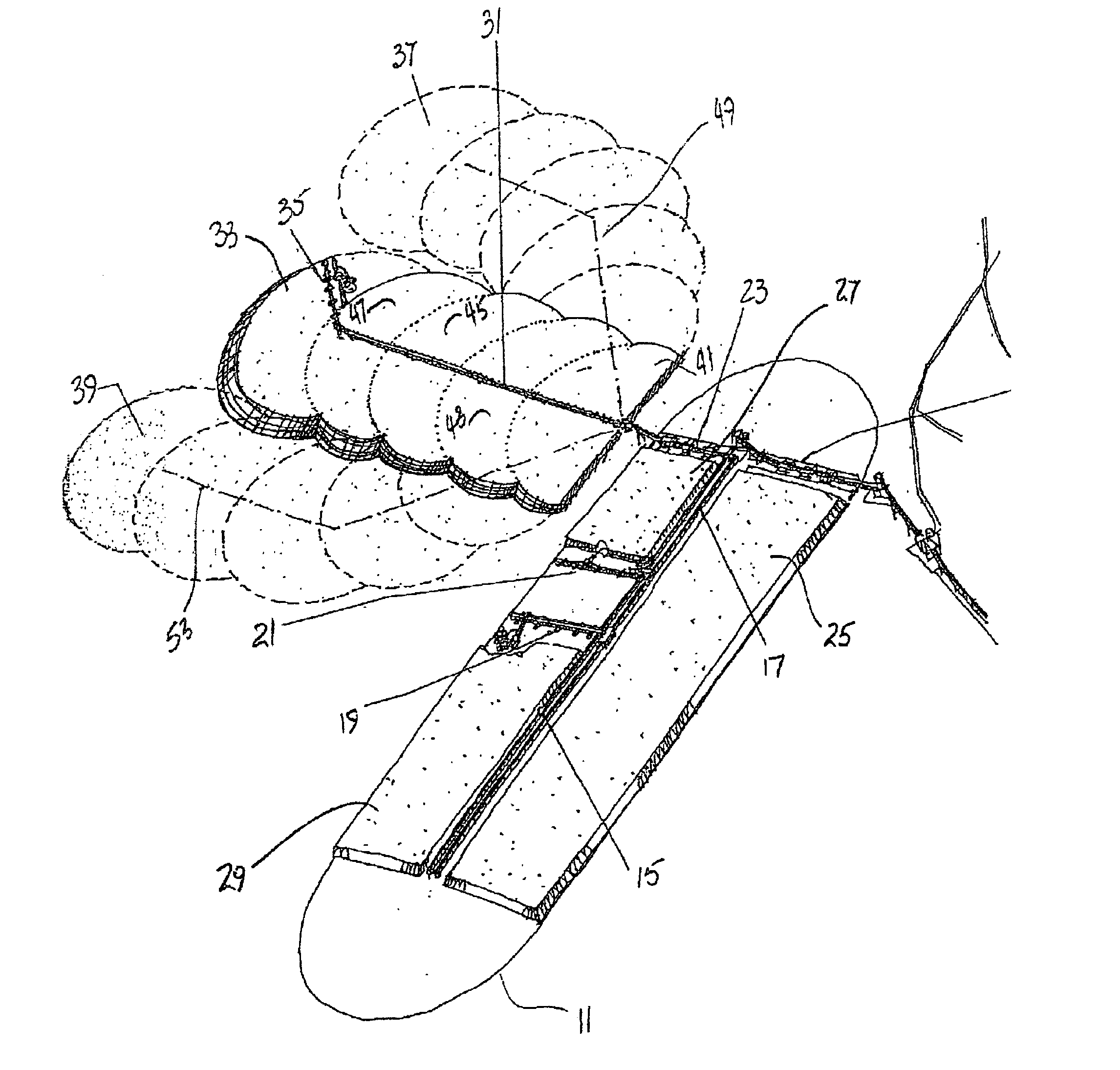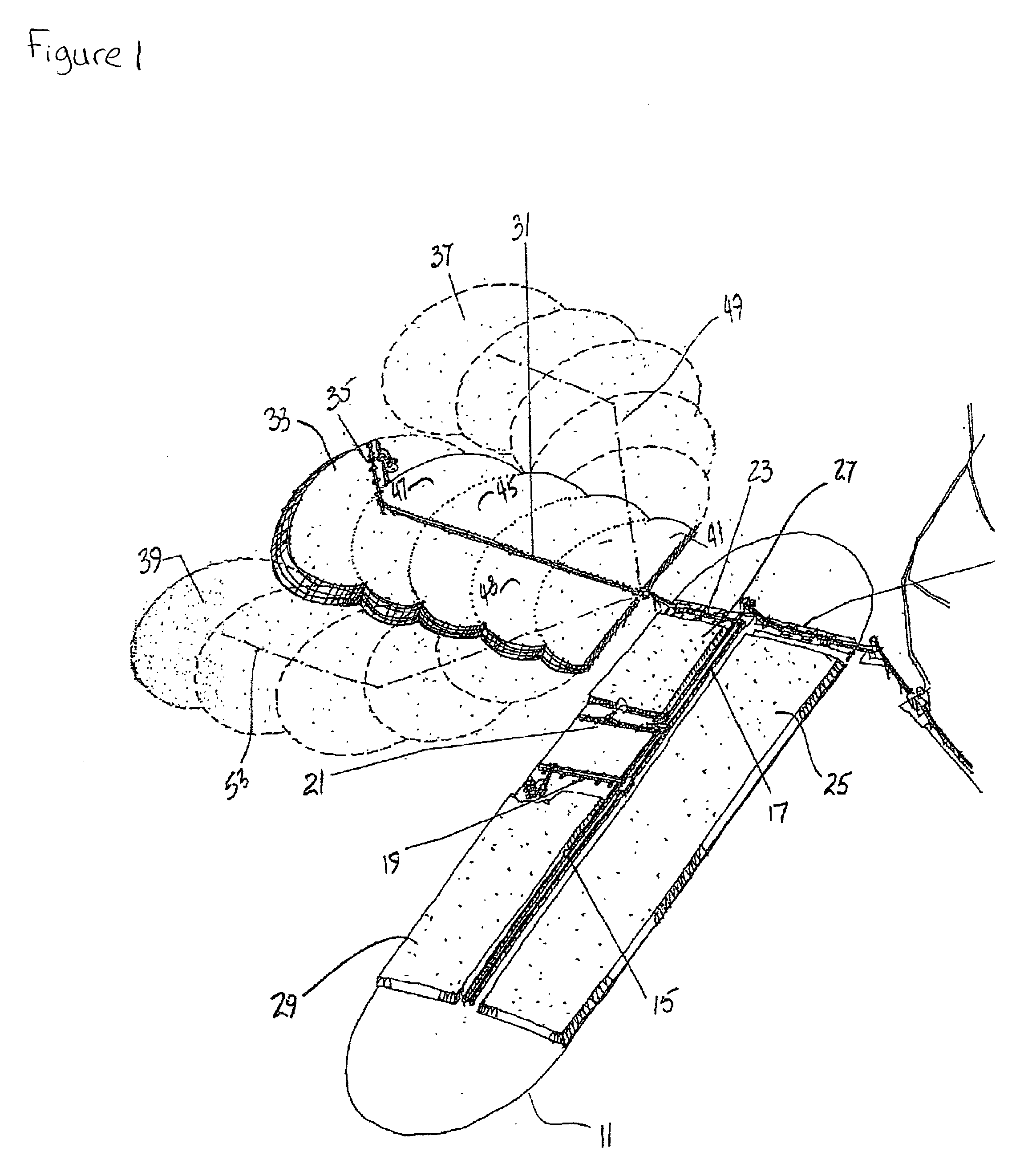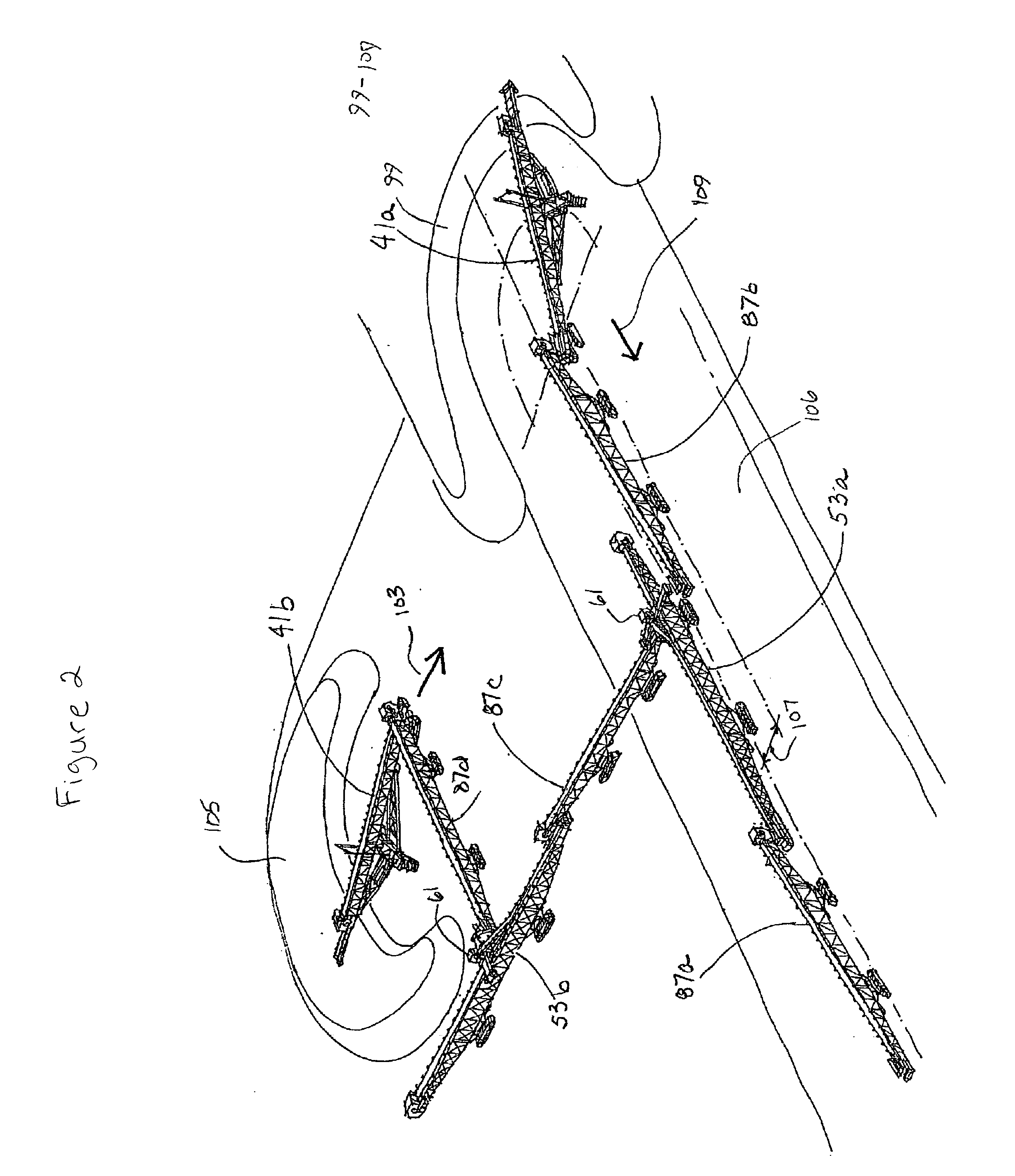Method for multiple lift stacking using mobile conveyor system
a conveyor system and mobile technology, applied in the direction of earthwork drilling, loading/unloading, surface mining, etc., can solve the problems of requiring a great deal of additional earthwork effort, a large amount of labor to extend and retract the overland conveyor, and the system takes a long time to move any appreciable distance, etc., to achieve the effect of reducing down time and improving flexibility and speed
- Summary
- Abstract
- Description
- Claims
- Application Information
AI Technical Summary
Benefits of technology
Problems solved by technology
Method used
Image
Examples
Embodiment Construction
[0036]FIG. 1 illustrates in three dimensions and schematically one of many possible layouts for an on / off leach pad stacking scheme adjacent to a dump site. The stacking of the leach pad and dump site is being accomplished by prior art equipment. The conveyor modules of the present invention are not being used. Leach pad 11 is typically designed to capture the leach liquid and the contained dissolved recoverable minerals or metals. A discharge conveyor 13 delivers aggregate to a stacking overland conveyor 15, which is aligned parallel to the longer axis of the leach pad 11. Overland conveyor 15 supplies the aggregate to bridge stacker 21, which is shown retreat stacking a lift 27.
[0037] Ahead of bridge stacker 21, a reclaim bridge conveyor and associated equipment 19, removes the leached aggregate lift 29 from its path. This reclaimed aggregate is mostly unwanted residue. The removed aggregate is supplied to reclaim overland conveyor 17. Overland conveyor 17 transfers the aggregate...
PUM
 Login to View More
Login to View More Abstract
Description
Claims
Application Information
 Login to View More
Login to View More - R&D
- Intellectual Property
- Life Sciences
- Materials
- Tech Scout
- Unparalleled Data Quality
- Higher Quality Content
- 60% Fewer Hallucinations
Browse by: Latest US Patents, China's latest patents, Technical Efficacy Thesaurus, Application Domain, Technology Topic, Popular Technical Reports.
© 2025 PatSnap. All rights reserved.Legal|Privacy policy|Modern Slavery Act Transparency Statement|Sitemap|About US| Contact US: help@patsnap.com



